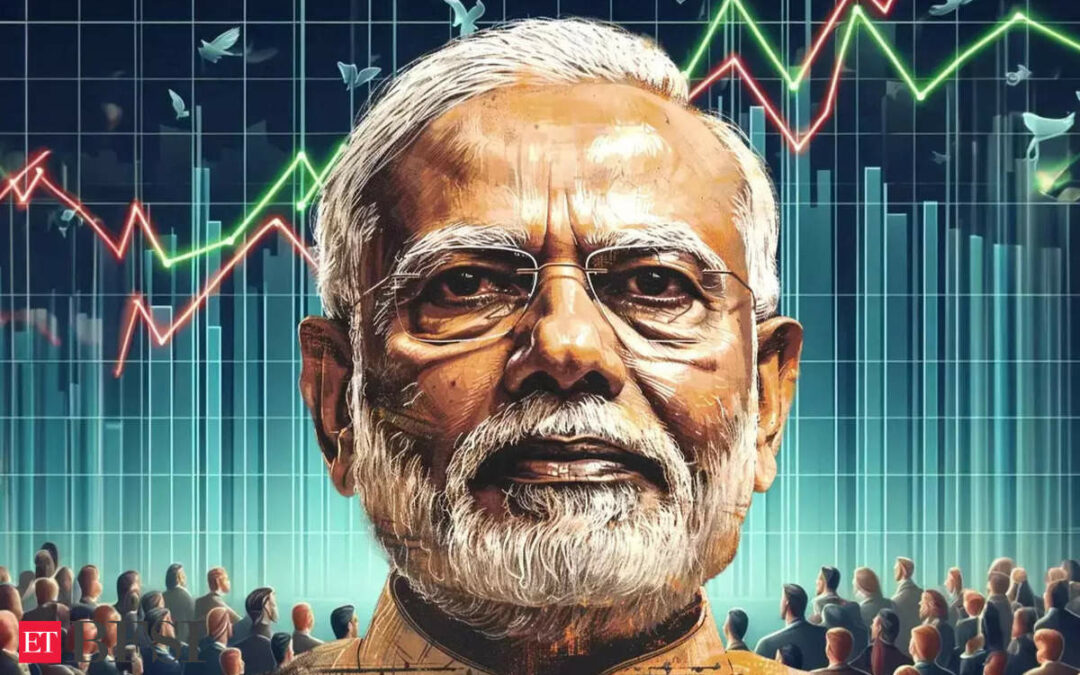India seeks to become a $30 trillion economy by the 100th year of its independence, the year 2047. Given that it is currently at around $3 trillion, it is seeking a ten-fold increase in roughly the next quarter century.
While this is ambitious, China did something similar during 1980 – 2000, and there is no reason why India cannot achieve this large growth if it gets its mind into doing so. Ambitious targets get us somewhere, even if not all the way there. Unambitious ones get us nowhere. So this is good.
But, a question that arises is whether a system of administration, which was put in place to serve the interests of colonial masters and could be modified only marginally post-independence, given the plethora of problems that the country had to deal with, would be adequate to propel India towards a ten-fold growth.
The current system of administration has clearly done a commendable job in managing the trauma of partition, keeping the country united despite the huge diversities, dealing with the multiple riots and internal security problems in many parts of the country, at least three major wars, and an era of strikes and hartals.
However, the needs of growth are very different, and a legitimate question will be whether a system that has served us well can continue doing so for the acceleration now needed or if some changes are necessary. Will a safe driver also make a good race driver? Now that Mr Modi is back for this third consecutive term, this would be an important question for the new government to look at.
The lead partners, Chandrababu Naidu and Nitish Kumar, are both known as pro-growth leaders and will certainly offer the support needed to lead India to a $30 trillion economy.
The pathways for achieving the $30 trillion vision
Six things seem important to look at. First, an institutional mechanism for integrated visioning is essential. The Govt tends to work through narrow sectoral ministries, each developing sectoral plans with only a 5-year time horizon. This is not enough. There has to be an integrated vision that cuts across sectors and has funds allocated to implement the vision developed by it.
Such an entity needs strong analytical skills and the ability to understand trends, identify upcoming opportunities and develop strategies to tap these opportunities. While the Niti Aayog is possibly mandated to play this role, it must be substantially strengthened.
Second, accelerating growth will require innovation and the ability to take risks. Unfortunately, the willingness to take risks is very low in the Government. There are numerous cases where genuine efforts to move forward quickly have led to cutting corners in following established procedures, and the concerned decision-makers have suffered considerable hardship.
This is not conducive to rapid growth, and staff must be encouraged to take risks. Ambitious targets cannot be met by risk-averse approaches. It is often said that there are more watchdogs and fewer dogs in the Indian governance machinery today, resulting in policy paralysis. This needs a major correction. While it may be true that no bonafide decision has resulted in the decision maker being prosecuted, yet there are several instances of officers’ houses being raided and chargesheets being served.
In many cases, officers have had to defend themselves in courts of law at a considerable cost to themselves. The very act of starting proceedings and reckless raids by investigating agencies has led to immense tension for many officers and their families. No one wants to risk being in such a situation.
The third has to come from recognising that Governments are not equipped to do everything themselves. The best role they can play is to facilitate and lead the implementation of growth plans, not do everything through government institutions themselves.
Govt staff are simply not equipped to do this. Therefore, it is critical to work with other agencies and work collaboratively with industry, academia, think tanks and a range of other stakeholders. Such collaboration is only possible if the respective positions between the government and others are one of equals. The culture of “Raja” Vs “Praja” has to go. There can be no place for this in a country that shed its colonial masters 75 years ago.
The fourth would require much greater collaboration across departments and ministries. The Government system is overly fragmented in India. In no other country is transport fragmented across 5 ministries and energy distributed over 4 ministries. There must be integrated planning and policy-making across fewer domains and ecosystems.
For example, can integrated planning for food, urban, energy, transport, security, and human development systems exist? After all, there are strong linkages across many sectors, and these have to be leveraged through integrated planning and policy-making across the entire ecosystem.
The current practices of staffing need to be reviewed as the fifth component of examining the delivery machinery. There is a need for far greater professionalism and rigor in staffing senior positions. The days of generalists holding senior positions for just a few years before they retire can be catastrophic.
It often leads to arrogance amongst top-level officers, especially those who know very little about the sector in which they are posted. Having read 5 files on a subject is just not good enough for someone to learn about any domain. Rigorous systems of placing people in senior positions is extremely important.
Sixth, we must have outcome-based performance reviews, but greater powers must be devolved to the officers made responsible for an outcome. For example, requiring the concurrence of finance for every small expenditure required for realising certain outcomes not only slows the process but also distributes accountability, most often failing to hold any single person accountable.
Finally, we must recognise that most of the growth from $3 trillion to $30 trillion will happen in urban areas. Cities will be fundamental to our growth ambitions as they not only have to accommodate the growth but also enable it. Far greater professionalism is needed in planning for and managing cities. The traditional master planning process being followed is outdated and needs to be junked in favour of a much more comprehensive approach that mainstreams the economic vision a city aspires to.
So, India’s ambition of a 10-fold growth in the next 25 years may sound ambitious, but only ambition can help us get somewhere. However, the delivery machinery needs a rigorous review, and fairly hard decisions are called for to fix it.
The BJP has come into office for the third successive term. While it may not have the majority that can give it the strength to make bold decisions, the partners are development-focused and are not likely to thwart any bold decisions that will strengthen the ability to run a lot faster than we have in the past.
(The author is a former IAS officer, currently serving as Professor of Practice at Indian School of Public Policy; Views are personal)











